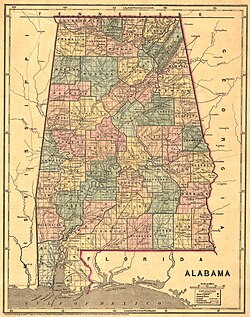
Throughout its history, Alabama has been shaped by a succession of distinct migratory movements that reflect both global forces and local developments. From the early Paleo-Indians traversing the North American continent to the forced relocation of Indigenous communities under the Indian Removal Act, each wave of newcomers has contributed to Alabama’s evolving demographic and cultural landscape. European colonization introduced Spanish, French, and British settlers whose territorial ambitions and economic pursuits set the stage for subsequent American expansion during the early 19th century. Meanwhile, the transatlantic slave trade brought enslaved Africans into the region, irrevocably transforming its social and economic fabric. Later, post–Civil War industrial growth and the Great Migration encouraged large-scale movements within and beyond the state, as African American communities sought new opportunities in urban centers across the nation. More recent arrivals—such as Southeast Asian refugees and Hispanic migrant workers—further underscore Alabama’s ongoing legacy as a site of diverse and continually shifting population patterns.
Research your ancestors on MyHeritage
List of Alabama historical migration routesList of Alabama historical migration routes
| Time Period | Ethnic Group | Origination Location | Arrival Location | Motivating Factors |
|---|---|---|---|---|
| Prehistoric era (c. 12,000 BCE – c. 1500 CE) | Paleo-Indians and later Mississippian cultures | Across Beringia (Siberia–Alaska) and throughout North America | Present-day Alabama region | Following game herds, seeking arable land, adapting to climate changes |
| Early 16th century | Spanish explorers | Spain | Gulf Coast and interior of present-day Alabama | Exploration, quest for gold, territorial claims |
| 1702–1763 | French colonists | France, French colonies in the Caribbean | Mobile area (French Louisiana) | Colonial expansion, trade, strategic control of the Gulf Coast |
| 1763–1783 | British colonists | Great Britain, British colonies along the Atlantic seaboard | Mobile area (West Florida), Tennessee Valley | Gains after the French and Indian War, pursuit of trade and land |
| Late 18th–early 19th century | American settlers ("Alabama Fever")[1] | Carolinas, Georgia, Virginia | Central and northern Alabama (Tennessee River Valley, Black Belt region) | Fertile land for cotton cultivation, economic opportunity |
| 18th–19th centuries (through 1860) | Enslaved Africans | West and Central Africa; via the Atlantic slave trade and domestic trade from the Upper South | Plantations in southern and central Alabama, especially the Black Belt region | Forced migration for plantation labor, driven by the cotton economy |
| 1830s–1840s | Indigenous tribes (Creek, Cherokee, Chickasaw, Choctaw) | Ancestral homelands in Alabama and the Southeast | Indian Territory (present-day Oklahoma) | Forced relocation under the Indian Removal Act ("Trail of Tears") |
| Post-Civil War period (1870s–1900s) | African Americans | Former plantation regions in rural Alabama | Emerging industrial centers (e.g., Birmingham), small towns | Escape from sharecropping, search for industrial and mining jobs |
| Great Migration (1916–1970) | African Americans | Rural Alabama (and broader Deep South) | Northern and Midwestern cities (e.g., Chicago, Detroit, Cleveland) | Escape from Jim Crow laws, pursuit of better economic opportunities |
| Late 20th century | Southeast Asian refugees (Vietnamese, Laotian, Cambodian) | Southeast Asia (Vietnam, Laos, Cambodia) | Urban centers and smaller communities in Alabama | Refuge from conflict (Vietnam War and related crises), U.S. resettlement programs |
| Late 20th–early 21st century | Hispanic/Latino immigrants | Mexico, Central America | Agricultural and urban areas of Alabama | Employment in agriculture, construction, poultry processing, and related industries |
References
- ↑ Alabama Fever. Encyclopedia of Alabama

